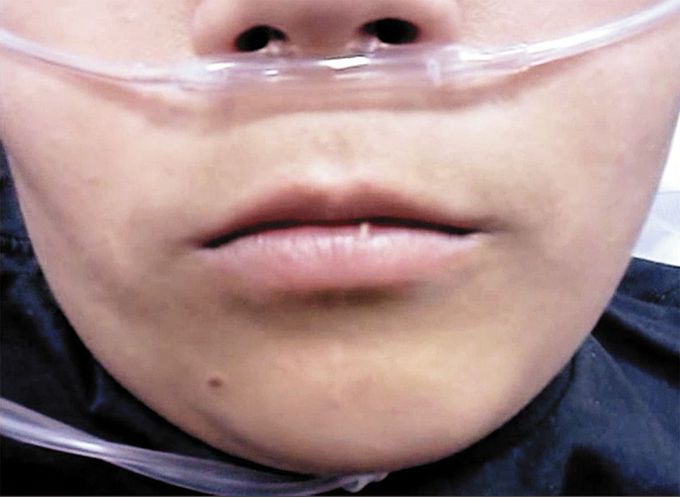


Perioral Myokymia
A healthy 13-year-old boy presented to a San Diego emergency department after a rattlesnake bite. The patient had been attempting to pick up the snake when he was bitten on his left ring finger. He immediately put the finger in his mouth and suctioned the bite. Within 5 minutes, he had swelling of the left hand, paresthesias, and the sensation of his throat closing. One hour later, perioral myokymia was noted on examination (video). Myokymia, or involuntary fasciculations of muscle fibers, is likely to be due to the venom-blocking voltage-gated potassium channels at the neuromuscular junction. The patient was admitted to the intensive care unit. He received epinephrine, diphenhydramine, and Crotalidae polyvalent immune Fab snake antivenom. At discharge, the swelling and paresthesias of the left hand were markedly reduced, and the systemic symptoms had resolved. In California, approximately 800 bites by venomous snakes occur annually. As in this case, many persons in developed countries who have snake envenomation are boys or young men who are attempting to handle or catch a snake.
How to identify if snake is poisonous or not by looking at the snake bite?


